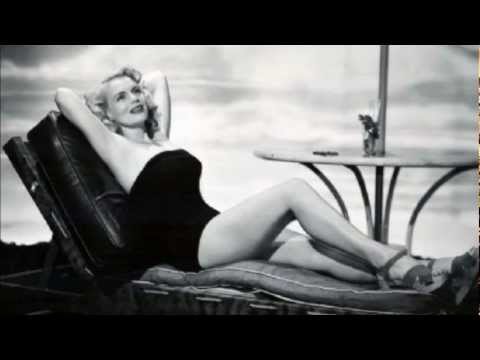In the earliest years, the program was hosted by “The Man in Black” (played by Joseph Kearns or Ted Osborne) with many episodes written or adapted by the prominent mystery author John Dickson Carr.
One of the series’ earliest successes and its single most popular episode is Lucille Fletcher’s “Sorry, Wrong Number,” about a bedridden woman (Agnes Moorehead) who panics after overhearing a murder plot on a crossed telephone connection but is unable to persuade anyone to investigate. First broadcast on May 25, 1943, it was restaged seven times (last on February 14, 1960) — each time with Moorehead. The popularity of the episode led to a film adaptation, Sorry, Wrong Number (1948), starring Barbara Stanwyck. Nominated for an Academy Award for her performance, Stanwyck recreated the role on Lux Radio Theater. Loni Anderson had the lead in the TV movie Sorry, Wrong Number (1989). Another notable early episode was Fletcher’s “The Hitch Hiker,” in which a motorist (Orson Welles) is stalked on a cross-country trip by a nondescript man who keeps appearing on the side of the road. This episode originally aired on September 2, 1942, and was later adapted for television by Rod Serling as a 1960 episode of The Twilight Zone.
After the network sustained the program during its first two years, the sponsor became Roma Wines (1944–1947), and then (after another brief period of sustained hour-long episodes, initially featuring Robert Montgomery as host and “producer” in early 1948), Autolite Spark Plugs (1948–1954); eventually Harlow Wilcox (of Fibber McGee and Molly) became the pitchman. William Spier, Norman MacDonnell and Anton M. Leader were among the producers and directors.
The program’s heyday was in the early 1950s, when radio actor, producer and director Elliott Lewis took over (still during the Wilcox/Autolite run). Here the material reached new levels of sophistication. The writing was taut, and the casting, which had always been a strong point of the series (featuring such film stars as Orson Welles, Joseph Cotten, Henry Fonda, Humphrey Bogart, Judy Garland, Ronald Colman, Marlene Dietrich, Eve McVeagh, Lena Horne, and Cary Grant), took an unexpected turn when Lewis expanded the repertory to include many of radio’s famous drama and comedy stars — often playing against type — such as Jack Benny. Jim and Marian Jordan of Fibber McGee and Molly were heard in the episode, “Backseat Driver,” which originally aired February 3, 1949.
The highest production values enhanced Suspense, and many of the shows retain their power to grip and entertain. At the time he took over Suspense, Lewis was familiar to radio fans for playing Frankie Remley, the wastrel guitar-playing sidekick to Phil Harris in The Phil Harris-Alice Faye Show. On the May 10, 1951 Suspense, Lewis reversed the roles with “Death on My Hands”: A bandleader (Harris) is horrified when an autograph-seeking fan accidentally shoots herself and dies in his hotel room, and a vocalist (Faye) tries to help him as the townfolk call for vigilante justice against him.
With the rise of television and the departures of Lewis and Autolite, subsequent producers (Antony Ellis, William N. Robson and others) struggled to maintain the series despite shrinking budgets, the availability of fewer name actors, and listenership decline. To save money, the program frequently used scripts first broadcast by another noteworthy CBS anthology, Escape. In addition to these tales of exotic adventure, Suspense expanded its repertoire to include more science fiction and supernatural content. By the end of its run, the series was remaking scripts from the long-canceled program The Mysterious Traveler. A time travel tale like Robert Arthur’s “The Man Who Went Back to Save Lincoln” or a thriller about a death ray-wielding mad scientist would alternate with more run-of-the-mill crime dramas.
http://en.wikipedia.org/wiki/Suspense_%28radio_drama%29


14 Comments
This chessecake model looks very familiar, anyone know her name?
Is the model (or noodle) on the other end Jean Harlow?
Ok
Not Jean Harlowe, I suspect she was already gone by the time this pic.was taken…circa late Forties earlier Fifties! I do not know the actual model, but she was a model "pin-up" style. Not famous, just gorgeous.
By the style and appearance of her hair, shoes and swimsuit, definitely a Forties/Early Fifties era photo. I do LOVE all these pin-up model representations of your upload YouTube offerings! ♡ SUBSCRIBED.
it looks like Marie Wilson of My friend Irma from the 0s
Suspense: World of Darkness / The Locked Room / The Sisters
Harlow died in the mid 1930s Melanie, could it be Ann Sheridan?
+Robert Kriwer, yes you are right. I made a comment in response to a previous question asking if this was a picture of Jean Harlow. I replied no, a beautiful pin-up model from the late forties or fifties era but definitely not Jean Harlow! Great pin-ups, though!
the sisters is one of the best suspense episodes, featuring Agnes Morehead and Ida Lupino; another outstanding Suspense episode is 'Sorry Wrong Number', also featuring Ms. Morehead
Some interesting trivia, Jean Harlowe's husband, Paul Bern, committed suicide the morning after their wedding night because he couldn't consummate their marriage. He left a note describing his "abject humiliation," and apologized to her by describing the night as " only a comedy."
This story is in the book, "Hollywood Babylon."
This story is in the book, "Hollywood Babylon."
I've heard some of the last radio episodes and they're not as good, probably because the budget went to TV. I didn't care for the few TV episodes I've seen.